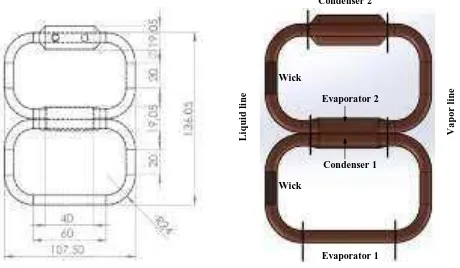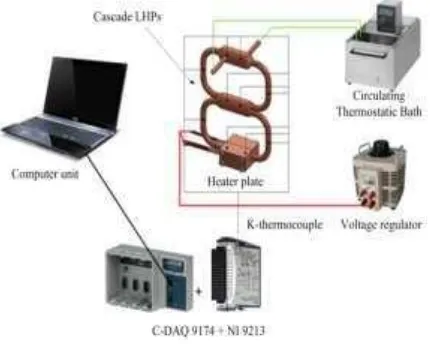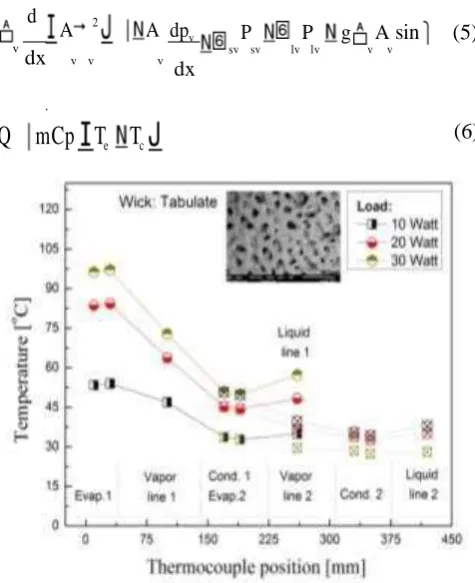ISBN 978-979-8510-61-8
Tema:
"Peran Riset Teknik Mesin
Dalam Membangun Daya Saing dan
Kemandiria Bangsa"
Sponsored By.
SugarGr9up Compames
AUTO DESK
" ./
,
£ N C
lll•·••esti,-.J1on Of Gas Bubble Velocities From Experimental. Data OfUitr•fast Tw0-Layer Euc1ron Beant X-Ray Tomography
Patmonoaji ,Manuel Banowski , Dirk lucas , Deendarlianto rm••u •r -,;>o>J
Of Tltermoacoustic Heat Pumping Direction Through Magninule Difference Variation Of Opposing Acoustic Waves
Widyaparaga, T. Hiromatsu,T. Koshirninl,M. Kohno andY Takata (HaL1384-1387)
Wall StrmPrediction of Abdominlll Aortic Antlll)' Sm: Influtnce of Geo•u<try• and Cun·e-Fitting Experimental. Data Wijaya (HaL1388-1395)
Beha.iour of New Beta Type r.tanium Alloy TNTZ in Modifitd Artificilll Saliva llhamdi, M. Ridha,M. Nakai and M.Niinomi (Ha LU16-U18)
!AnIn•·mi!ratic> n of Surface Integrity in Turning Inconel 718 by Using Coated Carbide Tool Under Df)•Cutting Condition Hassan, C.H (HaL1419-142S)
Ballmce of non-catalytic Pyr olysis of Plastic Wastestoproduce liquid Fuel
Saptoadi, Anjar Kmna Putra,Wega Trisunaryanti, Zainal Alimuddin,Mochamad Syamsiro, Kunio Yo$h.ikawa (HaL1426-1430)
ID••·elo•pment .of S'mol< e Jfanagement Demonstration Apparatus
S Nuyoho, Sudarman, Ali A Sungkar, Cahya T Anggara, Muhammad T Ramadhan, Muhammad Andira M Siregar, Yosua,Azimil G Alam, Gandhi Mahaputra, Muhammad A Santoso (Ha LH01-1508)
""'""'"'"'"of Radiru Ratio and Cross Section Ovality on Limit Pressure of LPG Toroidal Tanks lubis,Shirley Savetlana, and Ahmad Su'udi (Ha L1509-1513)
Impact ProptftJ ' of Sugar Palm Fibrt Reinforced Epoxy Compositt Savetlana,Nafrizal and Adhan Reza (HaL1514-1517)
The 12th Annual National Seminar Of Mechanical Engineering (SNTTM XII) October 23rd-24th, 2013, Bandar Lampung, Indonesia
1456 ISBN 978 979 8510 61 8
Thermal Analysis of Cascade Loop Heat Pipes with Biomaterial Wick
Nandy Putra
*, Wayan Nata Septiadi,Bambang Ariantara, Atrialdipa Duanovsah
Heat Transfer Laboratory, Department of Mechanical Engineering, University of Indonesia KampusBaru UI-Depok, 16424
Abstract: The development of electronics technology is limited by the heat generationof
electronic components. Heat pipesare heat exchangers which are widely used in electronics cooling system. Loop heat pipe (LHP) is a type of heat pipeswhichhas a very high thermal performance. Several studies have been conducted to reduce the thermal resistance ofLHPs. The improvement of LHPs performance can be achieved by developing the design of the shape, type of material and method of manufacture of the capillary wick. One of the problems in the application of the LHPs is the high temperature of the condensersthat lead to increasethe ambient temperature so as to interfere with the performance of electronic devices. Therefore we need a method to reduce the temperature of the condenser of the LHPs. The results of this study showed that the use of biomaterial wick can reducethe evaporator temperature by 35.16% and 2.9% at 30W heat load compared to the use of screen mesh and sintered cooper powder wick respectively. Further application of the cascade loop heat pipe in a cooling system can make a fairly low condenser temperature. The cascade LHP could reduce the heat discharging temperature through the condenser section by 16.7%, 26.2% and
30.1% at 10W, 20W and 39W heat load respectively compared to the single stage LHP. The
reduction in the thermal resistance of the cascade LHP achieves 62.23% at 10W heat load compared to the sintered copper powder. At 30W heat load, the thermal resistance of the cascade LHP with biomaterials wick is reduced by 60% and 25.9% than with the screen mesh and the sintered copper powder wick respectively.
Keywords: Cascade loop heat pipe, Biomaterial, Sintered powder, Screen mesh
1. Introduction
The development of electronics technology that rapidly increased creates a new problem in the thermal management. The performance improvement of electronic devices coupled with reduced area and dimensions impact on the emergence of a very large heat flux [1].Cooling that involve a very large heat flux can no longer be resolved by conventional method using only conduction and convection heat transfer as presented by Putra et al. [2], and this must be handled by implementing of two phase system instead. Loop heat pipes (LHPs) are cooling devices that work based on two phase circulating fluid flow through capillary action of porous media [3]. LHP's has a number of applications because of their high efficiency with the use of small amounts of fluid [4, 5].Another advantage of Loop Heat Pipes is that they are passive cooling systems where heat transfer is produced without the need for additional external power [6].
LHPs consists of the evaporator, vapor line, condenser and liquid line with porous media or wick capillary section that serves as a capillary pump to circulate the condensate from the condenser to the evaporator.LHPs have vapor flow and liquid flow that are completely separated [7].LHPs advantages such as passive cooling, great efficiency, low thermal resistance, ability to withstand the forces of gravity and an operational angle as well as its ability to transport heat over long distances resulting in LHPs ranging widely used in various
The 12th Annual National Seminar Of Mechanical Engineering (SNTTM XII) October 23rd-24th, 2013, Bandar Lampung, Indonesia
1457
The Capillary wick is one of the most important parts in the circulation of the working fluid on LHPs. If the wick is not working properly then there will be no circulation or LHPs would not be able to function as a good heat exchanger [8]. There are many parameters that influence the performance of capillary wick such as wick material, porosity, type of wick, wettability as well as some factorsthat affect the hydrophobic and hydrophilic properties of the capillary wick. The capillarity of a capillary wick is determined by the type of material used.On the other hand, oxidation on the surface of the wick material can degrade the wettability with a contact angle greater than 90° which tends to make the material to be hydrophobic[9] and reduce the capillarity of the wick.
There are many studies that have been done to improve the performance of LHPs, among which are Boo et al. [10] who examined the effect of pore size on the performance of a circular heat pipes and found that the smaller the pore size the greater the maximum thermal load, and the smaller the thermal resistance.Li et al. [11] conducted an experiment to compare the effect of compression in wick manufacturing on the properties of biporouswicksand found that the application of compression in wick manufacturing would increase the porosity, permeability, and strength of the wick.Yeh et al. [12] also observed the effect of using biporous wick with parameters of pores size, pore volume, and sintering temperature. It found that the most influential factor is the large pores and pore volume, while the sintering temperature does not really give the effect.JiyuanXu [13] observed the influence of the pore- forming volume ratio and pressure on biporous wicks and concluded that the smaller the pressure and the greater the pore-forming volume ratio, the better the porosity.
Upon cooling of electronic components, heat is transferred from the heat source to the evaporator and will be released from the condenser to the ambient.LHPs high performance will lead to the heat released from the condenser sufficiently large so that the temperature on the outside of the condenser will be very high. If the condenser to be around other electronic components, it will adversely affect the component. The objectives of this study are to obtain a lower condenser temperature of a LHP without reducing the heat transfer capability. Besides, the use of biomaterials as a capillary wick material, which is not easily oxidized, is expected to improve the thermal performance of LHPs.
2. Research Methodology
2.1Design of Wick and Loop Heat Pipe (LHPs)
The capillary wick is made using biomaterials Tabulate coral species with an average pore
diameter of ± 52.949 μm. The coral is formed into a cylinder with 20 mm long and 7 mm
The 12th Annual National Seminar Of Mechanical Engineering (SNTTM XII) October 23rd-24th, 2013, Bandar Lampung, Indonesia
1458 diameter. The length of each evaporatorsis 60 mm, and the length of each condensers section is 60 mm. The second stage condenser has a doubled-pipe construction for circulation of conditioning fluid flow. The first stage condenser is attached to the second stage evaporator. The first stage LHP uses water as the working fluid, while the second stage LHP uses 96% alcohol as the working fluid. The charging ratio of working fluid for both LHP is 30% of the total volume.
2.2Experimental Set-up
Fig. 3 shows the schematics arrangement of LHP experimental setup. It can be seen that the performance of the cascade LHP is tested using a heater as the heat source. The rate of heat load that exposed to the evaporator section is controlled by a voltage regulator, where the heat load value is calculated using the voltage and current measurement according to Eq. 1. Ten k- type thermocouples are installed, two on the first stage evaporator, twoon the liquid line and vapor line ofthe first stage LHP, two on the second stage evaporator, two on the liquid line and vapor line of the second stage LHP, and two on the second stage condenser.To reduce heat loss from LHPs wall to the ambient, polyurethane insulation with thermal conductivity of 0.02 W/m°C is used. The insulation materials cover the entire surfaces of the LHPs with ± 50 mm thick. Water is flowed through the second stage condenser using a circulating thermostatic bath (CTB) to condition the outer wall of the condenser at 25°C. The measured temperatures are sent to a computer through data acquisition system NI 9219 and c-DAQ9174. The experiments were conducted at heat loadsof 10 watts, 20 watts and 30 watts for each wick material. The thermal resistances of each stage of LHP are calculated using the temperature difference between evaporator and condenser section and the heat load according to Eq. 2.
The 12th Annual National Seminar Of Mechanical Engineering (SNTTM XII) October 23rd-24th, 2013, Bandar Lampung, Indonesia
1459 ISBN 978 979 8510 61 8
condenser temperature at each stage in °C respectively, and Q is the heat load in watt.
Figure 3 Schematic arrangement of the experimental setup
3. Result and discussion
The temperature distribution of the cascade LHP for the heat load of 10W, 20W, and 30W with biomaterials Tabulate wick is shown in Fig. 4. It can be observed that there is a decreasing temperature from the evaporator section toward the vapor line, the first stage condenser to the second stage condenser. The increase in heat load results in increasing temperature at entire section of LHPs. The temperature of the liquid line is seen to be higher than the temperature of the condenser section in both stages due to heat conduction from the evaporator section to the liquid line wall. It can also be observed that condenser temperaturesfor the cascade LHP for 10W, 20W and 30W heat load 27°C, 32°C and 34°C respectively. This means that the cascade LHP could reduce the temperature of the condenser by 16.7%, 26.2% and 30.1% for 10W, 20W and 30W heat load respectively compared to the single stage LHP.
The temperature distributions of the cascade LHP with biomaterials Tabulate, sintered copper powder and stainless steel screen mesh wick for 30W heat load are presented in Fig. 5. The temperature of the first stage evaporator for biomaterials Tabulate, sintered copper powder and stainless steel screen mesh wick are 96.73°C, 99.59°C and 149.18°C respectively. The use of biomaterials Tabulate as wick provides the lowest evaporator temperature than sintered copper powder and stainless steel screen mesh. This is due to the biomaterials Tabulate has a better porosity than sintered copper powder and stainless steel screen mesh so it will affect the
mass flow rate of the condensate (m) to the evaporator section [14] as shown in Eq. 3. It
would be proportional to the mass flow rate of the vapor (mv) to the condenser section [5]
according to Eq. 4 and Eq. 5. The mass flow rate would strongly determine the heat absorbed by the evaporator[16, 17]so at the same heat load the wick with highermass flow rate will provide a lower evaporator temperature as reflected in Eq. 6. In the LHP with screen mesh wick the evaporator temperature and the condenser temperature seem to be very high. This is because of the flooding condensation at the inner side of the condenser wall that the screen mesh wick could not handle this condition so the condensation of subsequent vapor would be obstructed by the liquid flow which also ceased in the evaporator.
.
m ( KAw / lleff ){(2 l / rc ) cos l gleff sin } (3)
.
The 12th Annual National Seminar Of Mechanical Engineering (SNTTM XII) October 23rd-24th, 2013, Bandar Lampung, Indonesia
1460 ISBN 978 979 8510 61 8
d
A 2 A dpv P P g A sin (5)
v
dx v v v
dx
sv sv lv lv v v
.
Q
mCp T
eT
c (6)Figure 4.The temperature distribution of the cascade LHP with biomaterials wick
Figure 5. The temperature distribution of the cascade LHP at 30W heat load
The 12th Annual National Seminar Of Mechanical Engineering (SNTTM XII) October 23rd-24th, 2013, Bandar Lampung, Indonesia
1461 ISBN 978 979 8510 61 8
powder. At heat load of 30W the thermal resistance of the LHP with biomaterials wick is 60% and 25.9% lower than the LHP with screen mesh and sintered copper powder wick. The use of biomaterials as the wick is capable to reduce the thermal resistance of the LHP compared to sintered copper and screen mesh wick. This result is parallel to the result of the work of Putra et al. [3] in the study of the performance improvement of single stage LHPs using biomaterials wick and nano fluid.
Figure 6.Thermal resistance of cascade LHPs
4. Conclusion
The study of the use biomaterial wick in cascade LHPs has been conducted. It can be concluded that the use of biomaterials Tabulate as the wick is capable to improve the performance of the cascade LHP by means of reducing the evaporator temperature by 35.16% and 2.9% at 30W heat load compared to screen mesh and sintered cooper powder wick respectively.The cascade LHP could reduce the heat discharging temperature through the condenser section by16.7%, 26.2% and 30.1% at 10W, 20W and 30W heat load respectively compared to the single stage LHP. The thermal resistance of the cascade LHP decrease with the use of biomaterials Tabulate as the wick compared to sintered copper powder and screen mesh wick. The reduction in the thermal resistance of the cascade LHP achieves 62.23% at 10W heat load compared to the sintered copper powder. At 30W heat load, the thermal resistance of the cascade LHP with biomaterials Tabulate wick is lower by 60% and 25.9% than with the screen meshand the sintered copper powder wick respectively.
5. References
[1] Nandy Putra, Wayan Nata Septiadi, Haolia Rahman, and Ridho Irwansyah, "Thermal
performance of screen mesh wick heat pipes with nanofluids," Experimental Thermal
and Fluid Science,2012: 40: 10-17.
[2] Nandy Putra, Wayan Nata Septiadi, and Ranggi Sahmura, "Thermal analysis of wick
length ratio and inclination angle of heat pipe with biomaterial coral wick," in International conference of saving energy in refrugeration and air-conditioning
(ICSERA), Yeosu, Jeollanan-Do, Korea, 2013.
[3] Nandy Putra, Rosari Saleh, Wayan Nata Septiadi, A.Okta, and Zein Hamid, "Thermaal
performance of biomaterial wick loop heat pipe with water-base Al2O3 nanofluids,"
The 12th Annual National Seminar Of Mechanical Engineering (SNTTM XII) October 23rd-24th, 2013, Bandar Lampung, Indonesia
1462 ISBN 978 979 8510 61 8
[4] Leonid Vasiliev et al., "Loop heat pipe for cooling of high-power electronic
components," International Journal of Heat and Mass Transfer, 2009: 52: 301–308.
[5] Michael Ohadi and Jianwei Qi, "Thermal management of harsh-environment
electronics," Microscale Heat Transfer Fundamentals and Applications, 2005: 479-498.
[6] Chien-Chih Yeh, Chun-Nan Chen, and Yau-Ming Chen, "Heat transfer analysis of a loop
heat pipe with biporous wicks," International Journal of Heat and Mass Transfer, 2009:
52: 4426–4434.
[7] Randeep Singha, Aliakbar Akbarzadeh, and Masataka Mochizuki, "Operational
characteristics of the miniature loop heat pipe with non-condensable," International
Journal of Heat and Mass Transfer, 2010: 53: 3471–3482.
[8] Nandy Putra, Wayan Nata Septiadi, Rosari Saleh, Raldi Artono Koestoer, and Suhendro
Purbo Prakoso, "The effect of CuO-Water nanofluid and biomaterial wick on loop heat
pipe performance," Accepted for publication in advanced materials research.
[9] Dhaval A. Doshi et al., "Investigating the Interface of Superhydrophobic Surfaces in
Contact with Water," Langmuir, 2005: 21: 7805-7811.
[10] Joon Hong Boo and Won Bok Chung, "Experimental study on the thermal performance
of a small-scale loop heat pipe with polypropylene wick," Journal of mechanical science
and technology,2005: 19(4): 1052-1061.
[11] Huan Li et al., "Development of biporous wicks for flat-plate loop heat pipe,"
Experimental Thermal and Fluid Science, 2012: 37: 91-97.
[12] Chien-Chih Yeh, Chun-Nan Chen, and Yau-Ming Chen, "Heat transfer analysis of a loop
heat pipe with biporous wicks," International Journal of Heat and Mass Transfer , 2009:
52(19): 4426-4434.
[13] Jiyuan Xu, Yong Zou, Mingxiu Fan, and Lin Cheng, "Effect of pore parameters on
thermal conductivity of sintered LHP wicks," International Journal of Heat and Mass
Transfer, 2012: 55(9): 2702-2706.
[14] David Reay and Peter Kew, Heat Pipe: Theory, Desain and Applications, 5th ed.,
Linacre House and Jordan Hill, Eds. London, United Kingdom : Elsevier, 2006.
[15] Yew Mun Hung and Q’bert Seng, "Effects of geometric design on thermal performance
of star-groove micro-heat pipes," International Journal of Heat and Mass Transfer,
2011: 54: 1198–1209.
[16] C.Y. Tsai et al., "Effect of structural character of gold nanoparticles in nanofluid on heat
pipe thermal performance," Materials Letters, 2004:58(9): 1461-1465.
[17] Chao-Chi Shih, Chih-Chieh Chen, Chih-Chung Chang, and Sih-Li Chen, "Dynamic test
strategy for diagnosing a heat pipe cooling module," International Communications in
Heat and Mass Transfer, 2012: 39(4): 494-503.
Acknowledgement


